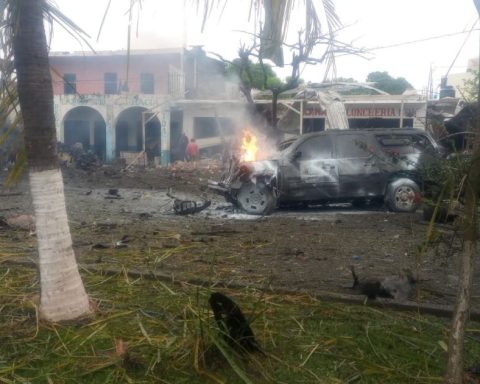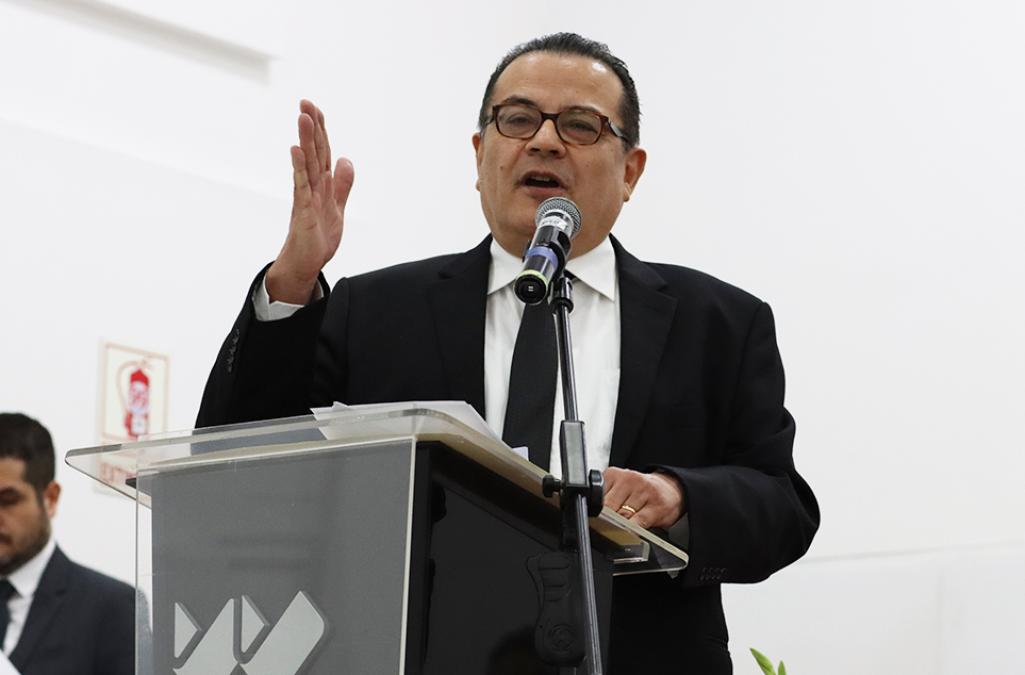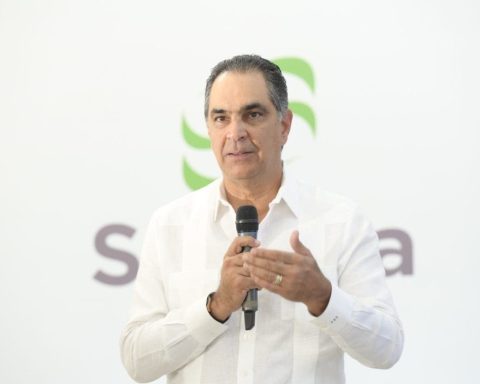▲ To cross from Tecún Umán, in Guatemala, to Ciudad Hidalgo, in Mexico, it is necessary to resort to rafters who impose high rates on foreigners. The improvised boats can carry up to six people.Photo Ap
Julie Lopez
Special for La Jornada
La Jornada Newspaper
Friday, January 17, 2025, p. 4
Guatemala. With some 3.2 million Guatemalans residing in the United States, which is equivalent to 18 percent of its current population, which totals 17.8 million, and who last year contributed 21 billion dollars in remittances to the economy of this country, the threat of the next inhabitant of the White House, Donald Trump, to carry out mass deportations places this Central American nation between a rock and a hard place.
The United States is already pushing towards that scenario. Last year, Guatemala received 64,640 deportees, according to the Guatemalan Migration Institute (IGM). In 2023, it welcomed 60,032 by air from Mexico and the United States, and another 19,665 by land, according to the International Organization for Migration (IOM), an average of nine per hour.
The Attorney General of Guatemala, Consuelo Porras, and Thomas Homan, in charge of migration and borders for the incoming Trump administration, held a virtual meeting on the 6th.
In the remote meeting they analyzed how to collaborate and reduce the use of the Guatemalan territory of origin and bridge for irregular migration.
Since the State Department canceled her visa in 2021 and included her on the Engel list (a list of people from Guatemala, El Salvador and Honduras who, in Washington’s assessment, have committed acts of corruption or participated in actions to undermine the democracy of their countries), countries), Porras has dedicated himself to requesting the capture of coyotes at the request of Washington to extradite them and have them tried in the United States; He also asks that his document be revalidated to be able to enter US territory.
Guatemala exports much less than it imports, and foreign shipments of merchandise, direct investment in the country, tourism and external loans would never cover the demand for foreign currency, says analyst Ricardo Barrientos. If it were not for the dollars in remittances that allow us to pay for imports, such as fuel, the trade imbalance would have the country in the red, as shown in a report from the Bank of Guatemala (Banguat) from last August.
Economic stability does not depend on tourism, nor on exports, but on the Guatemalans that we have kicked out with a kick in the butt.
Barrientos alerts The Day. The description of Guatemala’s exports, in addition to goods and services, should include human beings
adds the director of the Central American Institute of Fiscal Studies (Icefi).
In the United States there are 3.2 million Guatemalans who generate 92 percent of family remittances. Less than one percent leaves Mexico and Spain, and at least 7.2 percent from other countries, says the IOM.
The avalanche of dollars they send supports the external sector of the Guatemalan economy
estimates Icefi. It keeps the exchange rate stable (an average of 7.5 quetzales per US dollar) and determines the prices of imported products. Ironically, poverty pushed most of these migrants to leave the country.
Although the main reason for migrating is economic, those expelled also flee discrimination and criminal and gender violence, exposes The Day Francisco Juárez, officer for the Guatemala Program of the American Friends Service Committee (AFSC). This organization focuses on combating inequality and the consequences of violence, as well as analyzing the causes of migration.
Juárez mentioned how, during the internal armed conflict (1960-1996), one million Guatemalans went into exile due to political persecution. For the same reason, during the governments of Jimmy Morales (2016-2020) and Alejandro Giammattei (2020-2024), at least 50 judges, prosecutors, lawyers, human rights defenders and journalists went into exile in the United States and other countries.
At least 90 percent of Guatemalans did emigrate to improve their labor income, living conditions and generate remittances. Three percent did so for family reunification and other reasons stand at less than one percent, a 2022 IOM survey indicates.
According to the Ministry of Economy (Mineco) and a 2024 Icefi report, the labor market in Guatemala cannot absorb the 12.5 million people of working age; So, six out of 10 are employed in the informal sector.
Where do they come from?
Seventy percent of the remittances that arrive in Guatemala come from California, New York, Florida and Texas, according to the IOM.
The United Nations Development Program (UNDP) and the Guatemala Migration Activity Index (IAMG) reveal that they are sent by migrants who left the departments of Huehuetenango, San Marcos (border with Mexico), Quetzaltenango, Chiquimula and Jutiapa (the last two, border with Honduras and El Salvador).
The National Institute of Statistics reports that among these communities, Huehuetenango has the third highest poverty rate, with 81.2 percent. Among the 50 municipalities throughout the country with the highest IAMG, 17 are from that department. The other five are from Quiché, the second poorest with 86.4 percent, and the third that received the most remittances in 2022, after San Marcos with 54 percent poverty and the department of Guatemala, with 21 percent. Chiquimula is also among the poorest (at 60 percent), mainly in the Chortí indigenous region.
Almost a third of the entire population benefited by remittances works in the agriculture segment and a quarter in commerce, restaurants and hotels. For this reason, six out of every 10 dollars received cover consumption expenses and only three go to investment and savings, reports the IOM.
Figures of the phenomenon
The estimated population in Guatemala is 17.8 million inhabitants; Recent data assures that 18 percent of that number live in the United States. Four out of every 10 Guatemalan migrants abroad are workers, artisans and mechanics. Two others work in services and sales, and two more are unskilled workers, and one more is a farmer. Professionals, scientists and academics are only 0.6 percent, according to the IOM and Banguat.
Guatemala remained the second Latin American country after Mexico that receives the most remittances. In 2024, 21 billion dollars will enter, or 19 percent of its gross domestic product (GDP). In Mexico, 59,518 million in remittances is equivalent to 3.4 percent of GDP during the first 11 months of last year.
In February 2024, the president of Guatemala, Bernardo Arévalo (2024-2028), recognized the role of remittances. They are boosting the economy, not necessarily as they should in terms of development, but it is one of the things we have to start addressing
he admitted.
In this regard, the spokesperson for Mineco, Carla Fión, maintained that this ministry does have a strategy to generate more foreign currency that will increase exports and tourism, and a 2024-2027 plan to attract foreign direct investment
which includes productive activities that generate sustainable employment for Guatemalans
.
Arévalo also mentioned in 2024 that the country should create economic conditions to stop the causes that force the youngest to migrate to the United States
and work on infrastructure
to improve abandoned regions, although he warned that to do so he needs help from the partner countries
.
Meanwhile, a 2018 global competitiveness report indicates that crime, corruption, bureaucracy, inadequate infrastructure and political instability discourage foreign investment, Icefi recalled last year, a situation that has changed little.
There is an enormous distance between the amount of dollars that migrants send and those generated by other sources. In 2023, there were 1,552.3 million dollars in foreign direct investment; 13 thousand 35.3 million for exports, and 1 thousand 76 million dollars for tourism, against 19 thousand 804 million dollars in remittances. That year, these funds tripled public social spending and were 30 times greater than public investment, according to data from Banguat and the Ministry of Finance that Icefi analyzed.
The fear is that with Trump deportations will increase and remittances will decrease. Even if poverty (56 percent) still generates migration, the omen – according to Barrientos – is of a social and economic tragedy.















